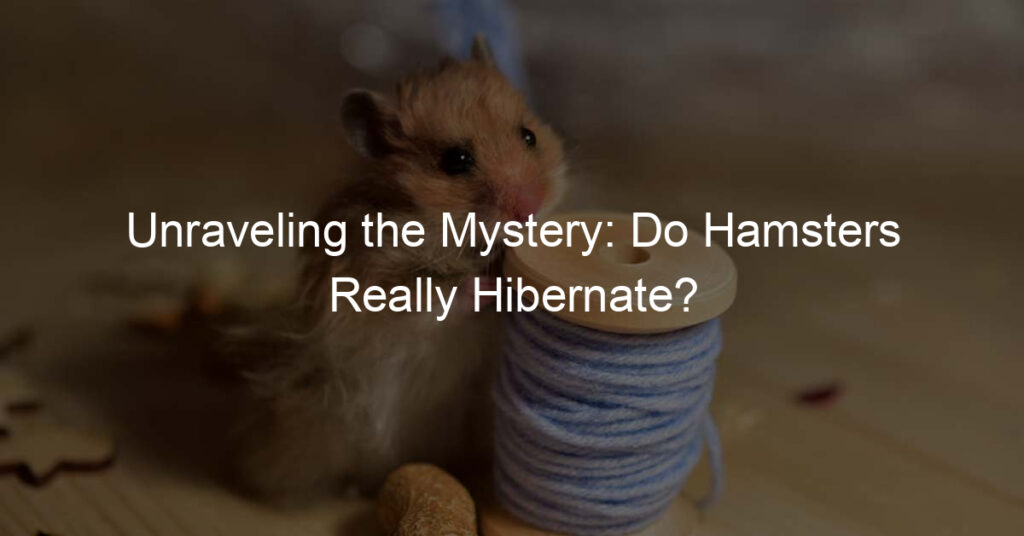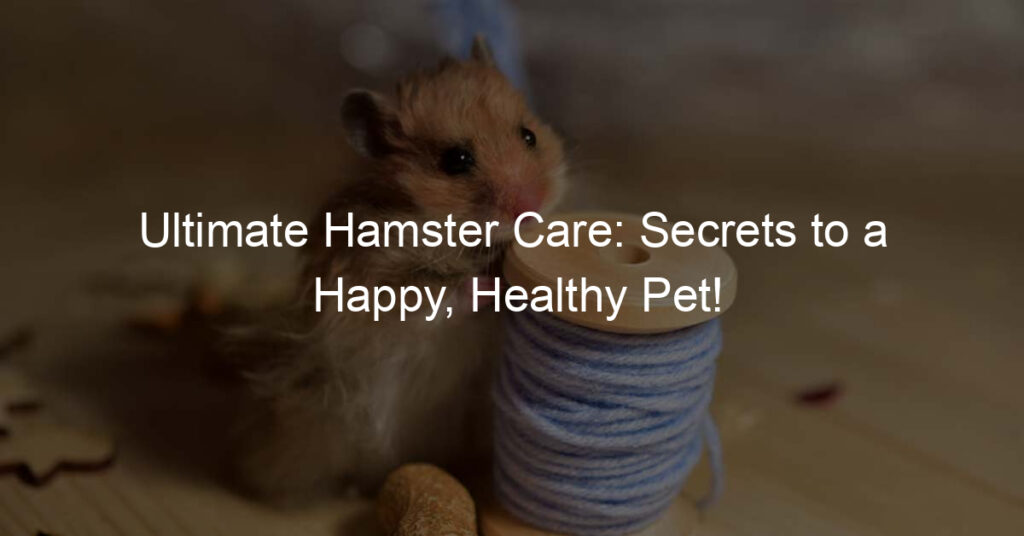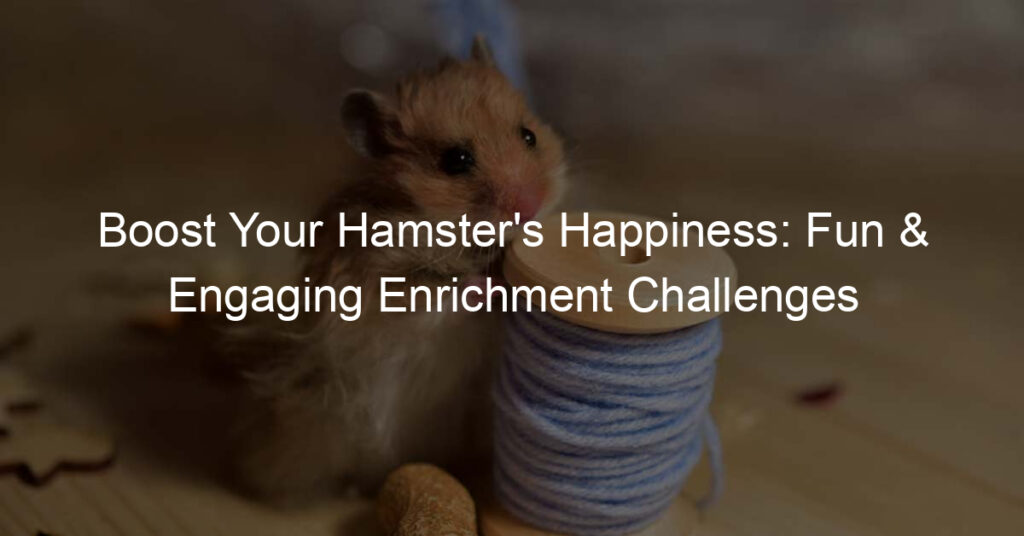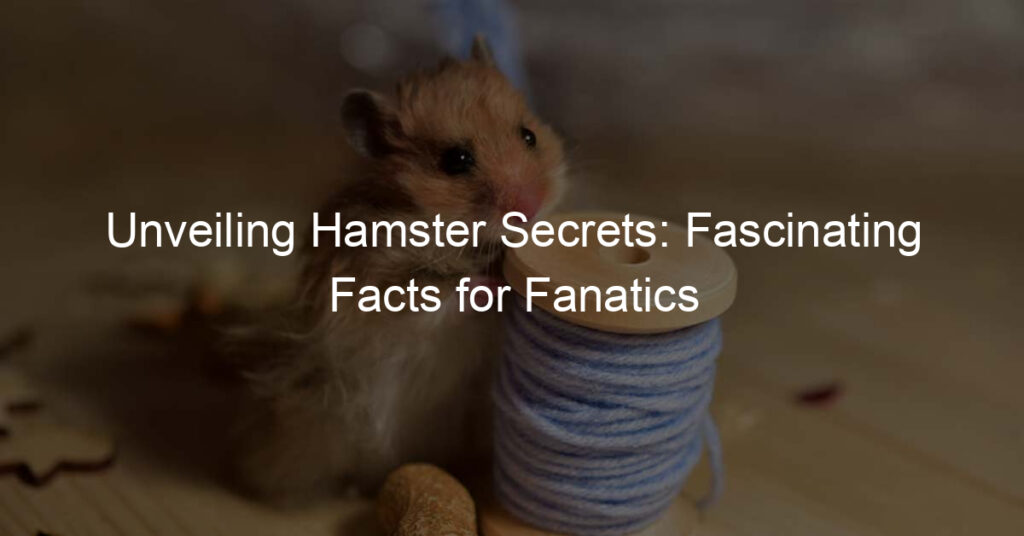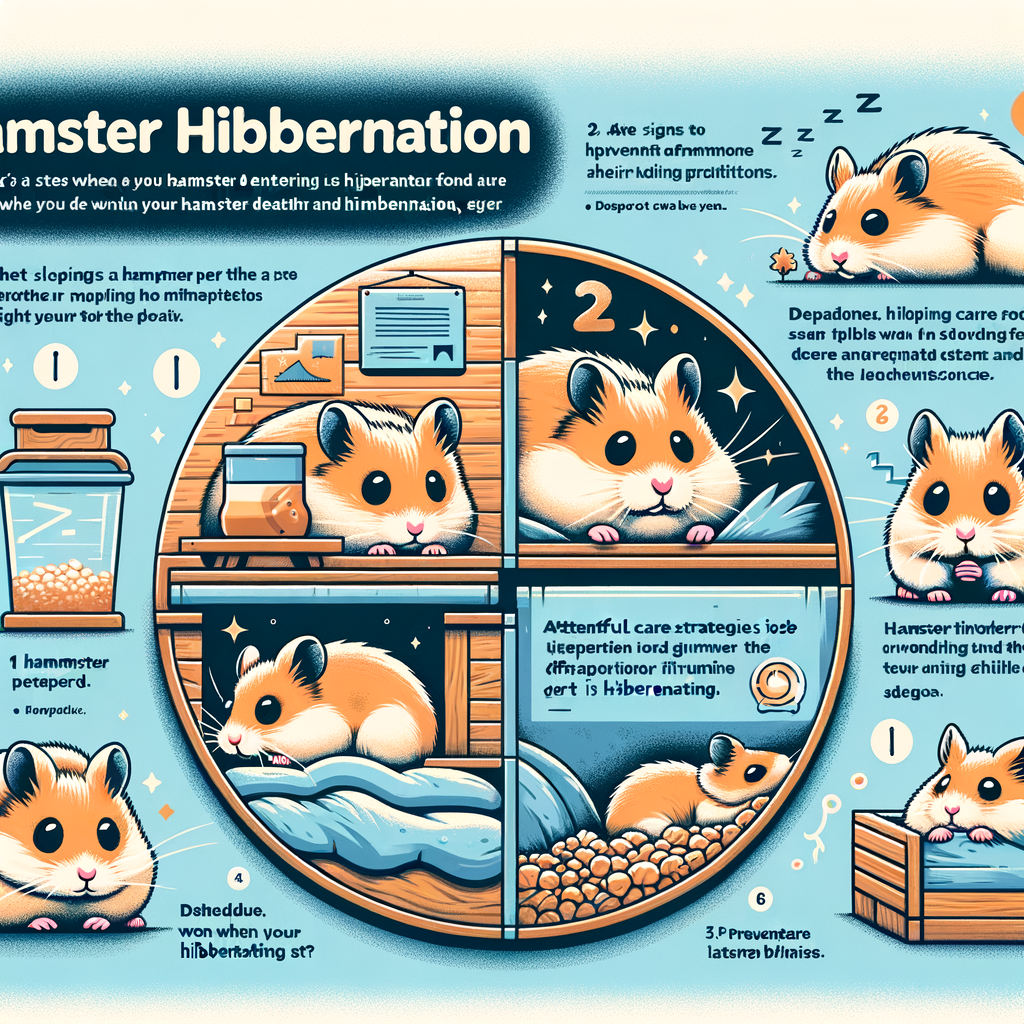
Introduction to Hamster Hibernation
Hamsters are fascinating creatures with unique habits that can sometimes baffle their owners. One of these intriguing behaviors is hibernation. In this section, we will delve into the world of hamster hibernation and explore their sleep patterns.
-
Understanding Hamster Hibernation
Hamsters, like many other animals, have the ability to hibernate. Hibernation is a state of inactivity, where the hamster’s body temperature drops, and their metabolic rate slows down. This behavior is a survival mechanism that allows them to conserve energy during cold winter months when food is scarce. However, domestic hamsters may also hibernate if their environment becomes too cold or if they experience sudden changes in their habitat.
-
Hamster Sleep Patterns
Hamsters are nocturnal creatures, meaning they are most active during the night and sleep during the day. However, their sleep patterns can change during hibernation. A hibernating hamster will appear to be in a deep sleep, and their body will feel cold to the touch. They may also breathe very slowly and deeply. It’s important to note that hibernation is not a daily sleep, but a prolonged state of inactivity that can last for several days or even weeks.
Understanding the hibernation habits of your hamster can help you provide the best care for your furry friend. In the following sections, we will explore more about hamster hibernation, including signs of hibernation, how to care for a hibernating hamster, and how to differentiate between hibernation and other states like illness or death.
Hamster Hibernation Facts
Hamster hibernation is a fascinating subject, filled with interesting facts that can help us understand these small creatures better. Here are some key facts about hamster hibernation:
- Fact 1: Hibernation is not Sleeping
Many people confuse hibernation with sleeping, but they’re not the same. Hibernation is a survival strategy used by hamsters to conserve energy during cold winter months when food is scarce. During hibernation, a hamster’s body temperature drops, and its heart rate slows down significantly. This is different from regular sleep, where the hamster’s body functions remain normal. - Fact 2: Not all Hamsters Hibernate
Not all species of hamsters hibernate. Syrian hamsters, for instance, are known to hibernate when the temperature drops below 20 degrees Celsius. Dwarf hamsters, on the other hand, do not hibernate at all. It’s important to know the specific needs of your hamster species to provide the best care.
Understanding these facts about hamster hibernation can help you better care for your pet and ensure they live a healthy and happy life. Stay tuned for more insights on hamster hibernation signs, care, and more.
Hamster Hibernation Signs
Understanding the signs of hamster hibernation is crucial for every hamster owner. It allows you to provide the necessary care and attention your furry friend needs during this period. Let’s explore some of the physical signs that your hamster may exhibit when it’s preparing to hibernate.
Physical Signs
Physical signs are often the first indicators that your hamster is entering hibernation. These signs can be subtle, but with careful observation, you can spot them. Here are two key physical signs to look out for:
- Lowered Body Temperature: One of the most noticeable physical signs of hamster hibernation is a significant drop in body temperature. Unlike their usual warm and active selves, hibernating hamsters tend to feel cooler to the touch.
- Reduced Movement: Hamsters preparing for hibernation often show reduced movement and activity levels. They may appear lethargic, spending more time sleeping or resting than usual.
Remember, these signs can vary from hamster to hamster. It’s always best to monitor your pet closely and consult with a vet if you notice any unusual behavior.
Behavioral Signs
When hamsters prepare for hibernation, they exhibit certain behavioral changes. These changes are important signs that pet owners should be aware of. Let’s take a closer look at some of these signs.
- Sign 3: Decreased Activity
- Sign 4: Change in Eating Habits
One of the most noticeable signs of a hamster preparing for hibernation is a decrease in their usual activity levels. Hamsters are typically energetic creatures, but when they are about to hibernate, they may start to slow down. They may spend more time sleeping and less time running on their wheel or exploring their cage. This is because their bodies are conserving energy for the long sleep ahead.
Another behavioral sign of hamster hibernation is a change in eating habits. Prior to hibernation, hamsters often eat more than usual. This is known as “hoarding” behavior, where they store extra food in their cheeks or in a designated spot in their cage. This behavior is a survival instinct, as it allows them to have a food supply ready for when they wake up from hibernation. However, once they enter hibernation, they will stop eating altogether.
Understanding these behavioral signs is crucial for hamster owners. It allows them to better care for their pets during this unique period and ensures that the hamster is healthy and safe. Remember, if you notice any unusual behavior or signs of distress in your hamster, it’s always best to consult a vet.
Hamster Hibernation Care
When it comes to hamster hibernation, it’s crucial to understand how to provide proper care and prevent hibernation if necessary. Let’s delve into these two important aspects.
- Proper Care During Hibernation
- Keep the hamster’s environment quiet and undisturbed to allow them to rest.
- Monitor their body temperature. It should be low, but not too cold. If it feels icy, gently warm the hamster with your hands.
- Provide fresh food and water, but don’t be alarmed if your hamster doesn’t eat much. They’re living off their body fat.
- Check on your hamster daily to ensure they’re breathing, albeit slowly.
- Preventing Hamster Hibernation
- Keep your hamster’s habitat warm. A steady temperature of 20-23 degrees Celsius (68-73 degrees Fahrenheit) is ideal.
- Ensure your hamster has a consistent light-dark cycle, mimicking the natural cycle of day and night.
- Provide plenty of food and water so your hamster doesn’t feel the need to hibernate due to scarcity.
During hibernation, your hamster’s body temperature drops, and their activity levels decrease. This is a natural process, but it requires your careful attention. Here are some tips:
Remember, hibernation is a normal process for hamsters in the wild, but it can be stressful for pet hamsters. Always keep a close eye on them.
While hibernation is natural, it’s not always necessary for pet hamsters, especially if they live in a warm, stable environment. Here’s how you can prevent it:
By maintaining a comfortable environment, you can help your hamster avoid unnecessary hibernation and stay active and healthy.
In conclusion, hamster hibernation care involves understanding the signs of hibernation, providing a quiet and undisturbed environment, and maintaining a warm and stable habitat. With these tips, you can ensure your furry friend stays safe and comfortable during the colder months.
Hamster Hibernation or Dead?
One of the most alarming and confusing situations for a hamster owner is finding their pet lying still and unresponsive. It’s important to know that hamsters can go into a deep sleep called hibernation, which can often be mistaken for death. Let’s explore how to distinguish between the two and what steps to take if you’re unsure.
- Distinguishing Between Hibernation and Death
- What to Do If Unsure
When a hamster is hibernating, it will appear very still, and its body will be cold to the touch. However, if you look closely, you will notice a very slow, but regular, breathing pattern. This is a key sign that your hamster is in hibernation, not dead. On the other hand, a dead hamster will not show any signs of breathing and will be completely limp when picked up. It’s crucial to observe your hamster carefully before jumping to conclusions.
If you’re unsure whether your hamster is hibernating or dead, the first step is to gently pick it up. If it’s hibernating, you’ll feel a slight resistance in its body. If it’s dead, it will be limp and unresponsive. You can also try to gently warm your hamster by holding it in your hands or placing it near a warm (not hot) heating pad. If it’s hibernating, it should slowly start to wake up. If you’re still unsure, it’s best to consult with a vet immediately.
Understanding the difference between hibernation and death in hamsters is crucial for their care. Always remember to observe carefully and act gently. When in doubt, always seek professional help.
Hamster Winter Sleep
Winter can be a challenging time for hamsters. As the days grow shorter and the temperatures drop, these small creatures may behave differently. This section will help you understand your hamster’s winter sleep patterns and provide tips on how to care for your hamster during this season.
- Understanding Winter Sleep Patterns
- How to Care for Your Hamster During Winter
- Keep them warm: Ensure your hamster’s cage is in a room that maintains a consistent temperature. Avoid placing the cage near windows or doors where drafts could make the cage cold.
- Provide extra bedding: Extra bedding will help your hamster stay warm. They love to burrow and create a cozy nest, so providing extra material can help them do this.
- Monitor food and water: Hamsters may eat more during winter to store up energy. Make sure they have plenty of fresh food and water. Also, check the water bottle regularly to ensure it hasn’t frozen.
- Check on them regularly: Even though your hamster may be sleeping more, it’s important to check on them regularly. This will help you notice any changes in their behavior or signs of illness.
Hamsters are known for their unique sleep patterns, especially during winter. Unlike hibernation, where animals sleep continuously for weeks or months, hamsters enter a state called ‘torpor’. Torpor is a short-term hibernation that can last anywhere from a few hours to a few days.
In torpor, a hamster’s body temperature drops, and their metabolic rate slows down. This helps them conserve energy during cold periods when food may be scarce. It’s important to note that not all hamsters will enter torpor. Factors such as the hamster’s age, health, and the severity of the winter conditions can influence this.
Caring for your hamster during winter requires a bit more attention. Here are some tips:
Understanding your hamster’s winter sleep patterns and knowing how to care for them during this time can ensure they stay healthy and comfortable. Remember, every hamster is unique, so what works for one may not work for another. Always keep an eye on your hamster’s behavior and consult with a vet if you have any concerns.
Case Studies on Hamster Hibernation
In this section, we’ll delve into two insightful case studies that shed light on the hibernation habits of hamsters. These studies provide valuable insights into how hamsters prepare for and survive through the cold winter months.
- Case Study 1: The Sleepy Hamster
- Case Study 2: The Hibernating Hamster Colony
In this case study, a pet hamster named Fuzzy was observed over a period of six months. As winter approached, Fuzzy began to sleep more, eat less, and move slower. His body temperature also dropped significantly. This behavior continued for about three months, after which Fuzzy gradually returned to his usual active self. This study confirmed that hamsters do hibernate, and their body temperature, eating habits, and activity levels change during this period.
This case study involved observing a colony of hamsters in a controlled environment. As winter set in, the hamsters started to huddle together, their activity levels dropped, and they ate less. They also slept for extended periods. After about two months, the hamsters gradually resumed their normal activities. This study demonstrated that hamsters in a group also hibernate, and their behavior is similar to that of solitary hamsters.
These case studies provide valuable insights into hamster hibernation. They show that hamsters do hibernate, and their behavior changes significantly during this period. This information can help pet owners better understand and care for their hamsters during the winter months.
Key Takeaways on Hamster Hibernation
Let’s summarize the most important points we’ve learned about hamster hibernation. These key takeaways will help you understand and care for your hamster during its hibernation period.
- Takeaway 1: Hamsters hibernate to survive the cold winter months. This is a natural process that occurs in the wild and can also happen in domestic hamsters if their environment gets too cold. It’s important to keep your hamster’s habitat warm, especially during the winter, to prevent hibernation.
- Takeaway 2: Hibernating hamsters can appear dead, but they are not. They will have a very slow heartbeat and breathing rate, and their body temperature will drop. If you think your hamster is hibernating, try warming it up slowly and gently. If it doesn’t wake up after a few hours, it’s best to take it to a vet.
Remember, understanding your hamster’s behavior and needs is crucial for its well-being. Always monitor your pet closely, especially during the colder months, to ensure it’s healthy and comfortable.
Conclusion: Unraveling the Mystery of Hamster Hibernation
As we reach the end of our journey, we have learned a lot about the fascinating phenomenon of hamster hibernation. Let’s take a moment to recap the key points and share some final thoughts on this intriguing subject.
- Recap of Hamster Hibernation Facts
- Final Thoughts on Hamster Hibernation
Hamsters, like many other small mammals, have the ability to hibernate when the temperature drops. This is a survival strategy that allows them to conserve energy during the cold winter months. Hibernation in hamsters is characterized by a significantly lowered heart rate, body temperature, and metabolic rate. It’s important to note that not all hamsters hibernate, and it largely depends on their breed and environmental conditions.
Understanding hamster hibernation is crucial for any hamster owner. It helps us provide the best care for our little friends during their hibernation period. It’s also important to remember that a hibernating hamster is not a dead hamster. They might appear lifeless, but they are merely in a deep sleep. If you suspect your hamster is hibernating, ensure they are in a safe and warm environment, and try to wake them gently.
In conclusion, hamster hibernation is a fascinating and complex process. It’s a testament to the adaptability of these small creatures and their ability to survive in harsh conditions. As hamster owners, it’s our responsibility to understand this process and provide the best care possible for our pets. Remember, a well-cared-for hamster is a happy hamster!

